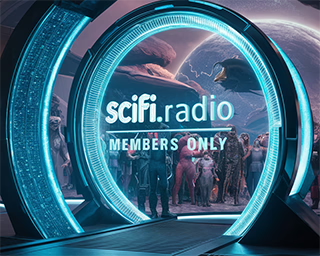The OSIRIS-REx mission collected rock and dust from the asteroid Bennu in 2020 and today NASA gave it’s first report on the intriguing space rock. A separate capsule containing the interplanetary cargo parachuted to Earth a little over two weeks ago, landing in the Utah desert on September 24th, on target.
The 4.5 billion year old asteroid was created before the solar system, and we now know is full of carbon compounds and water. This was suspected based on observations from earth. Below is what scientists first saw when they opened the outer seal of the capsule. Even more space dust!

Within those two weeks, scientists performed a “quick-look” analyses of that initial material, generating images from a scanning electron microscope, infrared measurements, X-ray diffraction, and chemical analysis. X-ray computed tomography was also used to produce a 3D computer model of one of the particles, highlighting its diverse interior. This early glimpse provided the evidence of abundant carbon and water in the sample. Also iron minerals, including iron oxide, or rust, that forms when iron meets water.

“As we peer into the ancient secrets preserved within the dust and rocks of asteroid Bennu, we are unlocking a time capsule that offers us profound insights into the origins of our solar system,” said Dante Lauretta, OSIRIS-REx principal investigator, University of Arizona, Tucson. “The bounty of carbon-rich material and the abundant presence of water-bearing clay minerals are just the tip of the cosmic iceberg. These discoveries, made possible through years of dedicated collaboration and cutting-edge science, propel us on a journey to understand not only our celestial neighborhood but also the potential for life’s beginnings. With each revelation from Bennu, we draw closer to unraveling the mysteries of our cosmic heritage.”

” We’ve confirmed we went to the right asteroid,” Dr Ashley King told BBC News.The three-day analysis by a 6 member expert “Quick Look” team showed the black, extraterrestrial powder to be rich in carbon and water-laden minerals like clays. It’s potentially how we got the water in our oceans and some of the compounds that were necessary to kick-start life. Bennu appears to have been formed in the asteroid belt billions of years ago and gradually was pulled by gravity closer to Earth until it began orbiting near Earth about a million years ago.
To perform their initial experiments, Dr King and colleagues used particles that had been spilled from the inner chamber – or Tag-Sam (Touch And Go Sample Acquisition Mechanism) as it’s known. This fine Bennu dust coats all the canister’s enclosing surfaces. “When they took the lid off the sample canister, it just revealed this black powder everywhere. It was incredible; it was so exciting,” Dr King recalled. Scientists around the world will be studying this ancient cosmic material for years. There’s about 250 grams
OSIRIS-REx is now off on a new mission, scheduled to arrive at asteroid Apophis in 2029 and study it up close, on an extended mission called OSIRIS-APEX. The latest mission launches tomorrow, to Psyche. For more information, see the NASA page on the launch.
-30-
![]()
David Raiklen wrote, directed and scored his first film at age 9. He began studying keyboard and composing at age 5. He attended, then taught at UCLA, USC and CalArts. Among his teachers are John Williams and Mel Powel.
He has worked for Fox, Disney and Sprint. David has received numerous awards for his work, including the 2004 American Music Center Award. Dr. Raiklen has composed music and sound design for theater (Death and the Maiden), dance (Russian Ballet), television (Sing Me a Story), cell phone (Spacey Movie), museums (Museum of Tolerance), concert (Violin Sonata ), and film (Appalachian Trail).
His compositions have been performed at the Hollywood Bowl and the first Disney Hall. David Raiken is also host of a successful radio program, Classical Fan Club.











